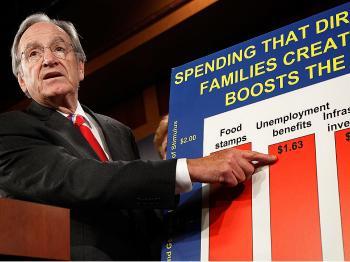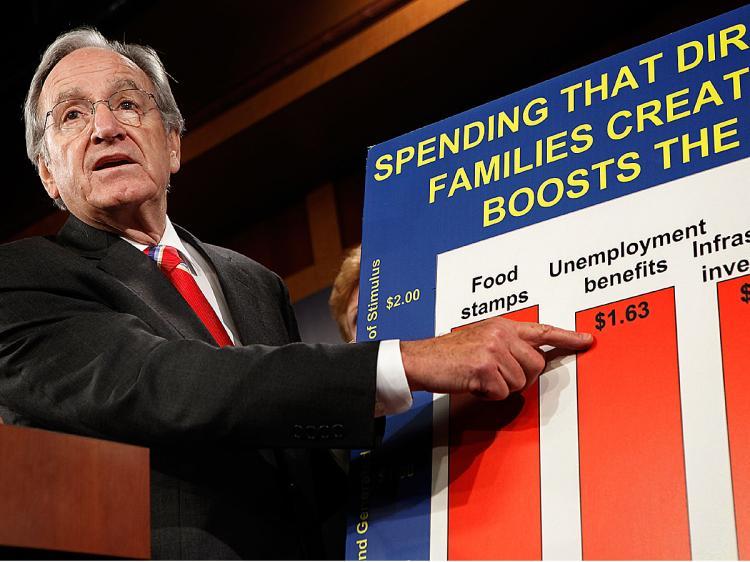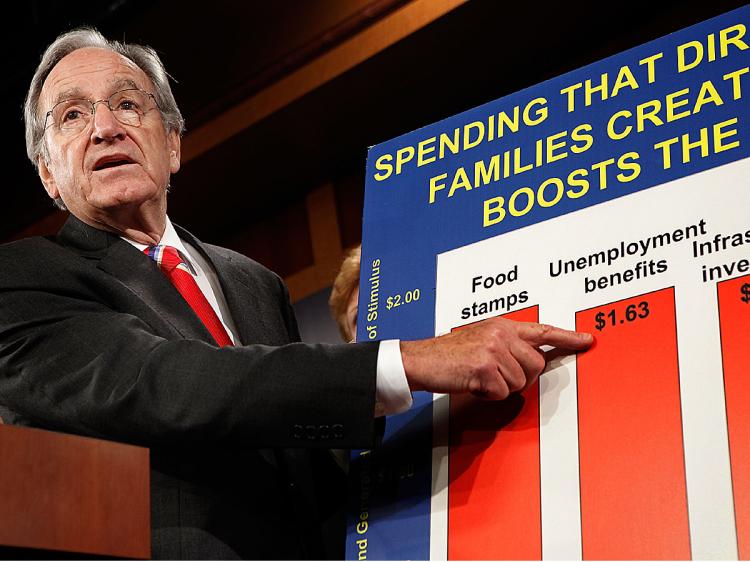Unemployment Picture Remains Bleak as Firms Cut Spending
U.S. consumers have been hit by waves of layoffs since year 2008, a trend not expected to reverse in the near future.

Sen. Tom Harkin talks about extending unemployment benefits during a news conference with fellow Senate Democrats at the U.S. Capitol October 20, 2009 in Washington, DC. Chip Somodevilla/Getty Images
|Updated:





